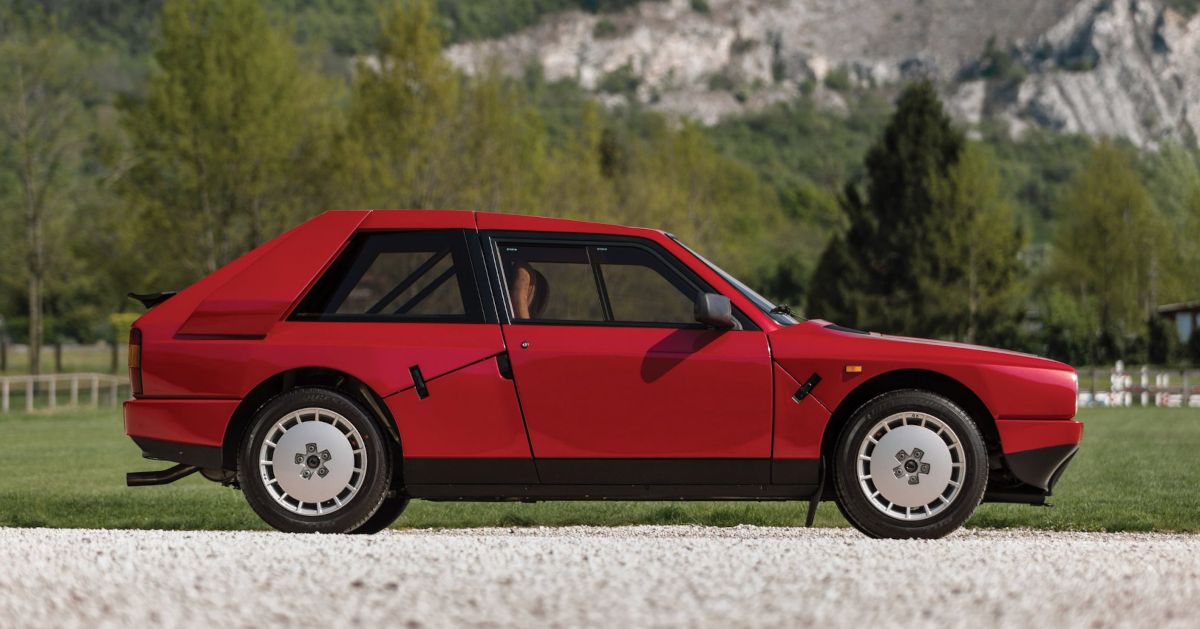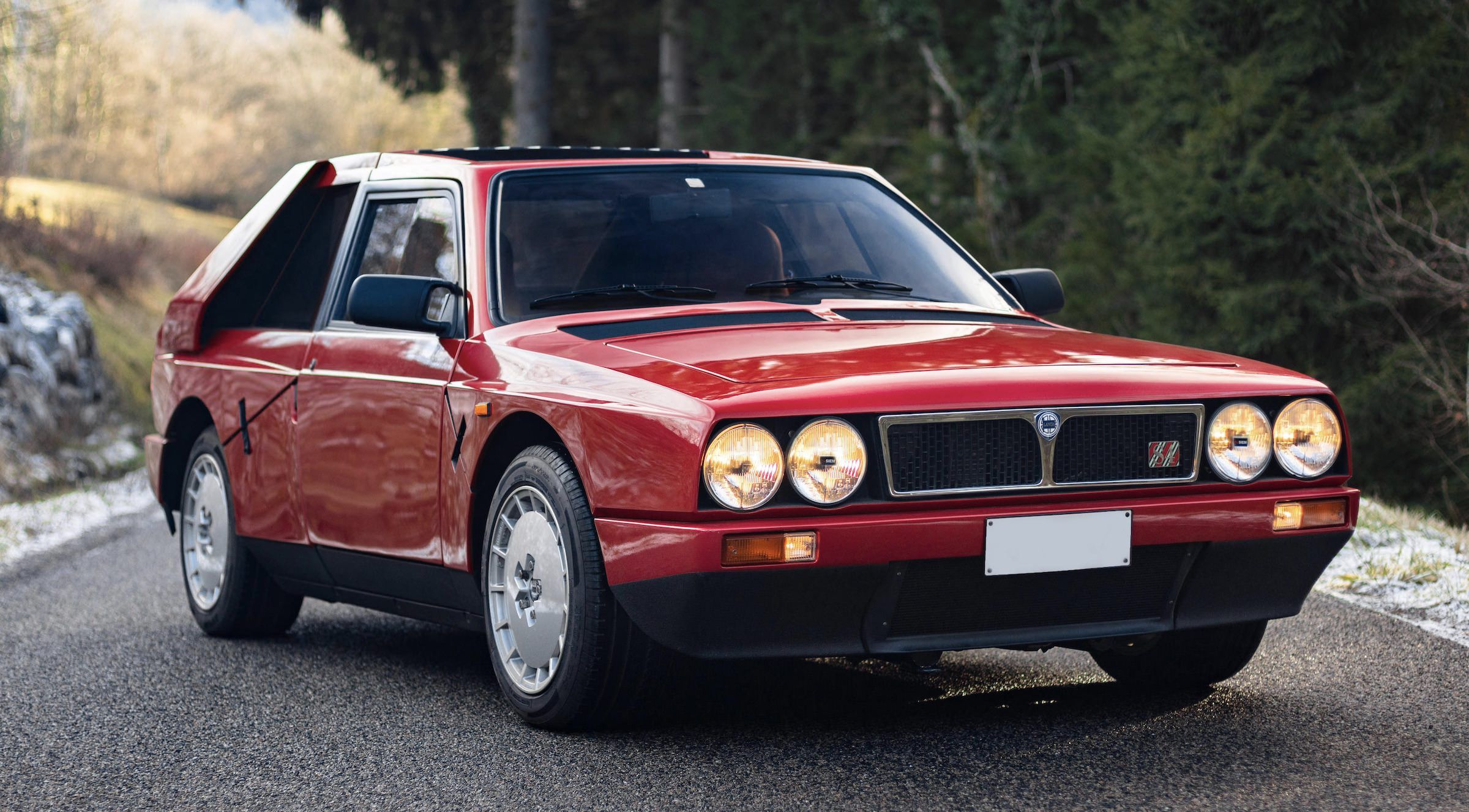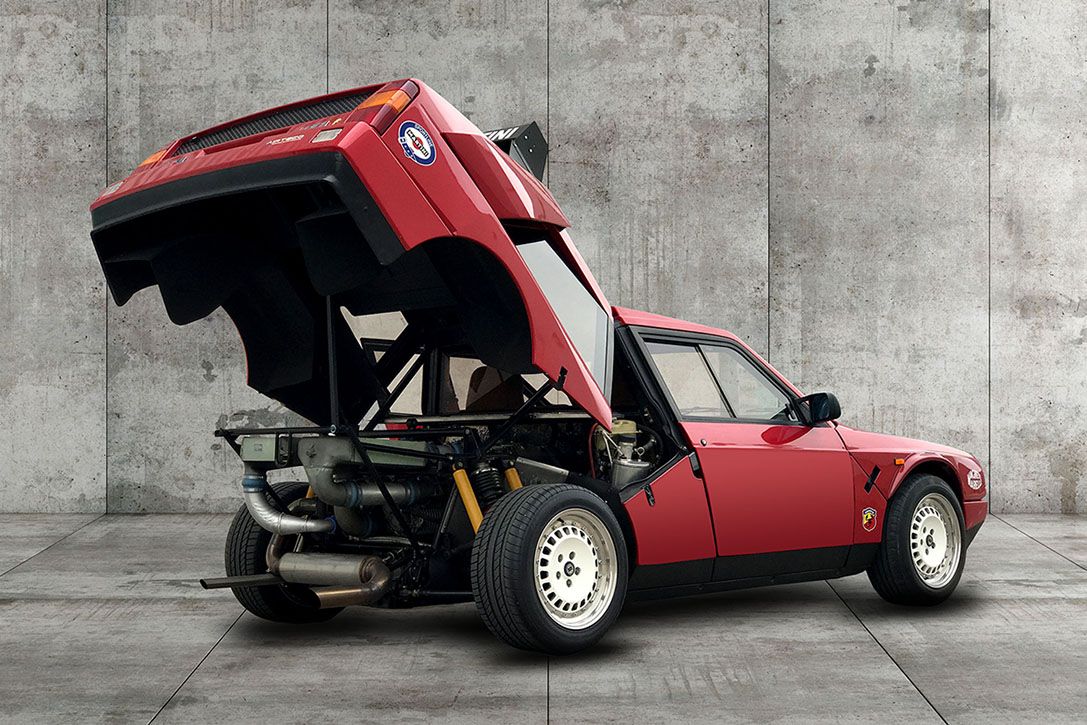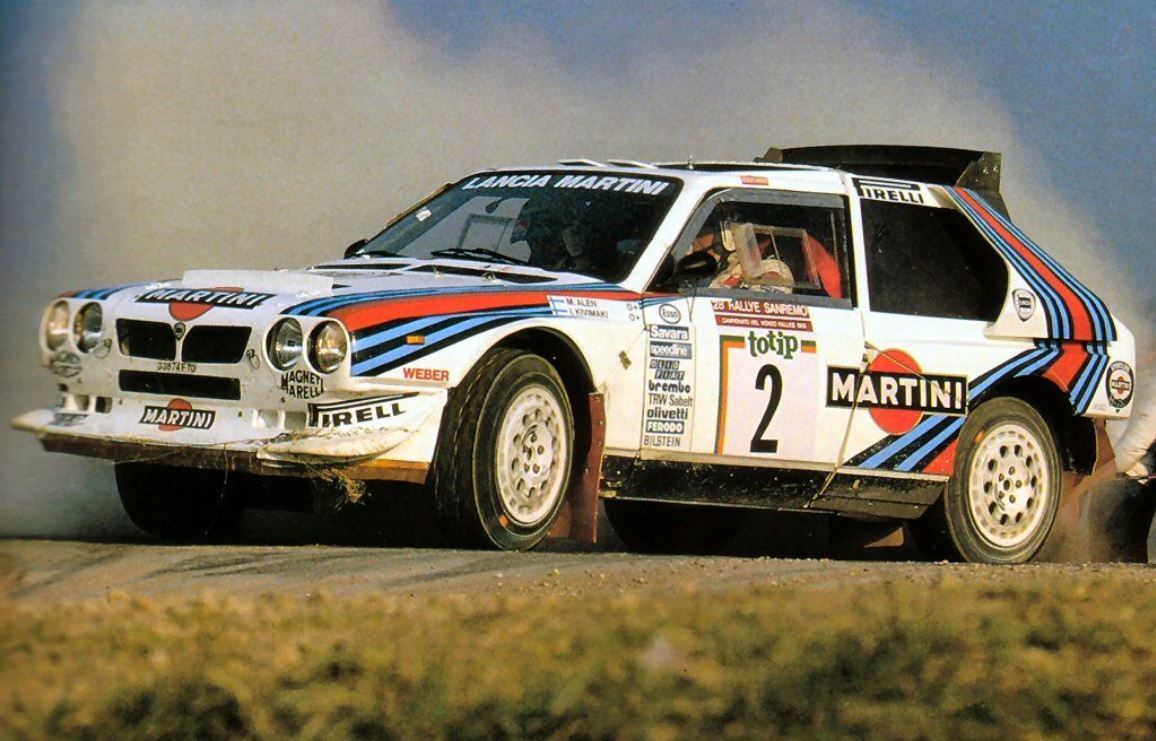So much has been written about the fascinating tragedy that was Group B rally racing, it seems difficult not to reiterate what has already been said. It was chaotic and crazy, a practically unrestricted pursuit of pure performance with insane high-horsepower cars screaming down narrow tracks on loose surfaces, whizzing past trees, ravines, steep drops and sometimes town centers, creating a margin for error thinner than the width of a human hair.
It was a test of advanced engineering as much as it was a competition of pure drivers' skill. The cars were furious beasts that took one hell of a racing driver to tame, but as fast as these cars could go, they could never completely outrun the risks and dangers. Group B ended in the wake of a disastrous accident that resulted in the deaths of both driver and co-driver of the very car at the centre of this piece: the savage, screaming, purpose-built Lancia Delta S4.
But if we judged race cars by the sole metric of how many lives they claimed, we'd lose sight of the unbelievable human achievements involved in making the cars so fast and so capable that accidents could turn fatal. Group B cars were particularly impressive things, and through a combination of fear and reverence, they have earned their place in the halls of automotive and motorsport history, as well as our respect.
Read on for a detailed look at the Lancia Delta S4, the category it raced in and how it became the car that brought an end to Group B.
The Definition of Homologation Special
The Lancia Delta S4 was Lancia's second entry into Group B, replacing the rear-wheel drive 037. Though the Delta S4 appears loosely based on the standard Delta Integrale hatchback, itself an excellent machine, under the skin the S4 is entirely different. Its chassis design was based on that of the 037, meaning it had a mid-mounted engine, but the new car added all-wheel drive to make it more competitive against Audi's dominant Quattro AWD technology.
The Delta S4 entered competition in 1985 for that year's season and competed until the series was cancelled the following year. More on that to follow.
The Delta S4's engine was a twin-charged 1.8l four-cylinder producing nearly 500 horsepower in race trim, which, combined with the car's AWD system made it capable of 0-60 mph in 2.3 seconds on loose surfaces.
Twin-charging, for the uninitiated, involves using both a supercharger and a turbocharger to smooth out the application of boost pressure and provide more torque at low RPMs, which was a problem with turbocharging at the time. 1980s turbocharged cars are infamous for boost lag, so twin-charging was used to mitigate the issue. A few other vehicles use this technology, including the Nissan March Super Turbo and the current Volvo powertrains.
The Delta S4's real advantage was its weight, or rather, lack thereof. The car weighed 892 kilograms, or just under 2,000 pounds. With nearly 500 horsepower, that gave the car a power-to-weight ratio of 560 horsepower per metric ton.
Most of this weight saving came from extensive use of lightweight materials in the car's construction. The panels were made of a carbon fibre composite wrapped around a lightweight tube-steel spaceframe chassis similar to the 037's.
Also stolen from the 037 was the car's long-travel front and rear suspension, with a single front coil and twin shocks separate from the spring in the rear. This was done not only for stability over rough terrain, but to absorb the impacts from landing jumps on rally stages.
The road-going homologation version of the Delta S4, called the "Stradale" model, made some concessions to be more usable on the road. The engine ran a more mild tune, producing just 247 horsepower, and the panels were made of more affordable fibreglass instead of carbon fibre. The AWD system was tuned for more rear-bias and less aggression, as the car was meant to be used primarily on tarmac rather than the loose surfaces with which the rally cars would have to contend.
It is estimated that fewer than 100 Delta S4 Stradale models were ever produced, and when they sold new they were priced five times higher than the next most expensive Delta model, which at the time was the HF Turbo.
The Car That Killed Group B
Group B rallying is perhaps best known for being about as close to lawless as modern motorsports has ever come. Compared to any racing series today, it was practically the Wild West, with engineers, race teams and drivers pushing their ideas, designs, tricks and talents further than previously possible to create the perfect racing package. This meant endless pursuits in lightness, agility, horsepower output, AWD systems and traction, but unfortunately there was not as much regard given to safety.
There were multiple fatal incidents over the half-decade of Group B's existence. In 1985, a Lancia 037 carrying Italian driver Attilio Bettega crashed into a ravine, the impact from which caused a tree to pierce through the floor and through his driver's seat. He was killed instantly, but his co-driver survived. Joaquin Santos lost control of the Ford RS 200 he was driving at Rally Portugal in 1986, killing three spectators and injuring a further 30.
The final blow to Group B came from a fatal Delta S4 crash involving Finnish driver Henri Toivonen and his co-driver, Sergio Cresto. The pair were on a timed run at the Tour de Corse rally when Toivonen lost control of his Lancia, running off the side of a cliff and landing at the bottom in a fireball. Both occupants were killed instantly.
This incident would mark the end of the Group B era of the World Rally Championship. Like all great things, it burned bright and it burned fast, and sadly there were fatal consequences to the competition's unrestricted pursuit of performance. Though the series may have claimed more than its share of lives, it provided us with some of the greatest homologation specials of all time, including the Lancia Delta S4.




